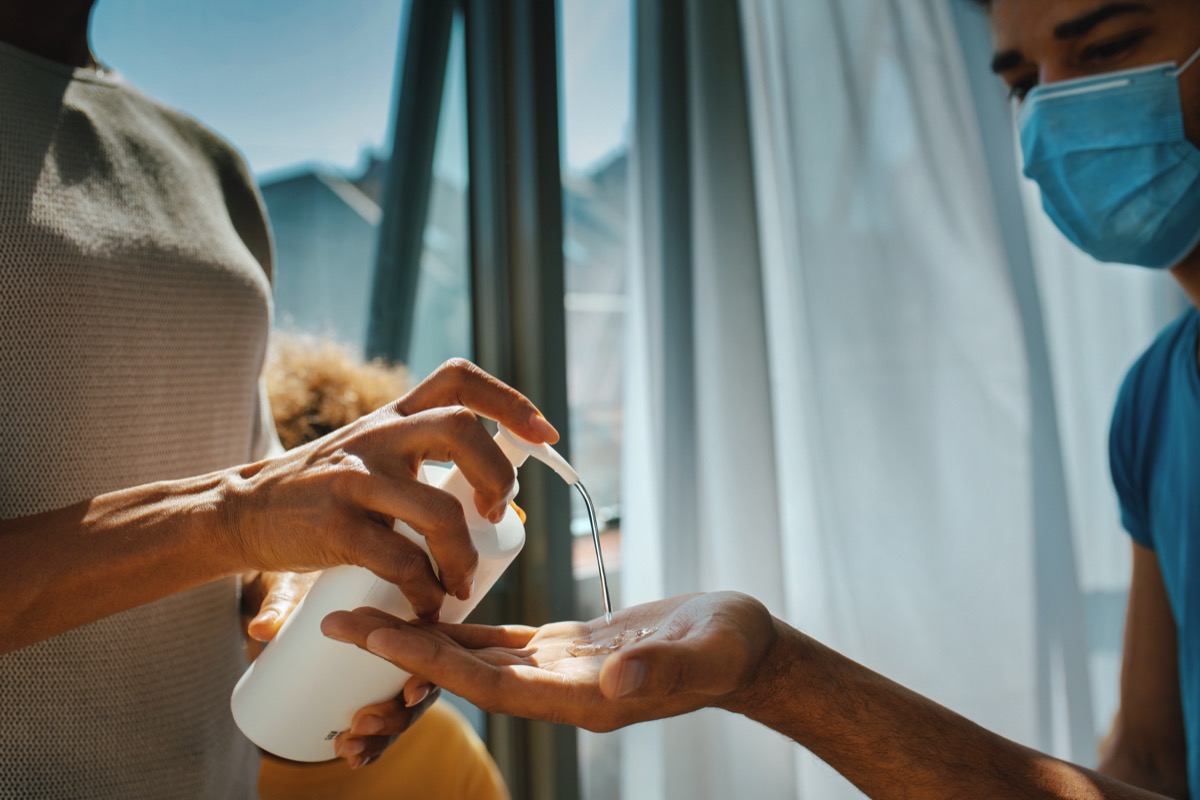The study, published on Aug. 13 in the journal Annals of Internal Medicine, came from the Guangzhou Center for Disease Control and Prevention in China. The researchers observed 3,410 close contacts in Guangzhou, who were linked to 391 primary cases of the coronavirus. Of those 3,410 close contacts, 127 were infected with the virus and labeled secondary cases. To determine where these secondary cases contracted COVID, the researchers divided transmission sites into multiple categories, including household, public transportation, healthcare settings, and workplaces/entertainment venues.ae0fcc31ae342fd3a1346ebb1f342fcb Out of the 127 secondary cases, 105 were infected in a household setting. That means the risk of contracting the coronavirus in your household is 10.3 percent, the researchers concluded. For comparison, only 1 of the secondary cases was linked to public transportation, while 7 were infected in healthcare settings, 11 in entertainment venues or workplaces, and 3 in multiple settings (meaning “exposure in more than one contact setting”). As a result, the researchers determined that the risk of contracting the coronavirus at the office or an entertainment venue is second highest at 1.3 percent, then healthcare setting at 1 percent, and then public transportation, which was only a .1 percent risk. Similarly, a May study out of China, which has not yet been peer reviewed, looked at 318 outbreaks in China in which three or more cases were identified. They divided the outbreaks into six categories: homes, transport, food, entertainment, shopping, and other. According to their research, homes were the source of 254 of the 318 outbreaks, which is a startling 80 percent. Interestingly, the second most common outbreak site was transport with 108, or 34 percent. (The researchers note that “many outbreaks involved more than one venue category.”) RELATED: For more up-to-date information, sign up for our daily newsletter. The researchers behind the August study also gave a possible explanation as to why coronavirus infections were so much more prevalent in homes: a lack of safety measures. “The risk for secondary infection via household contact was still highest compared with other contact settings because people spent more time at home, which led to more frequent and longer unprotected exposure than the other contact settings,” they wrote. During the January-to-March study period in Guangzhou, China, masks were mandatory in public settings, but not in households. Therefore, it was less likely for masks to protect household members from transmitting and contracting the virus. The researchers note that this is why “effective measures to reduce household transmission and quarantine of household contacts are extremely important.” Other studies back that notion, including another May report, also out of China, which found that wearing a mask at home was 79 percent effective at curbing coronavirus transmission among family members if adopted before symptoms arise. The research, published in BMJ Global Health, “confirms the highest risk of household transmission being prior to symptom onset, but that precautionary [measures], such as mask use, disinfection, and social distancing in households can prevent COVID-19 transmission during the pandemic,” the authors explained. And for more risky behavior to avoid, check out 24 Things You’re Doing Every Day That Put You at COVID Risk.
